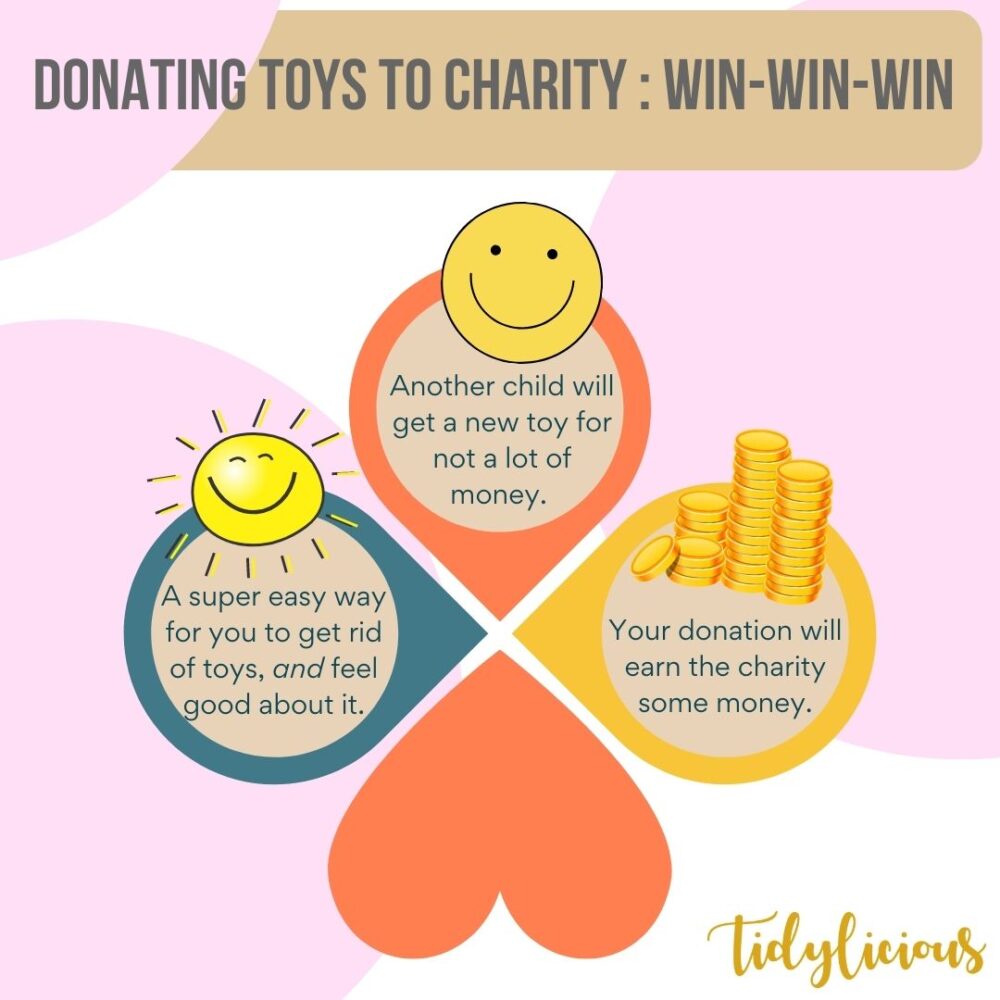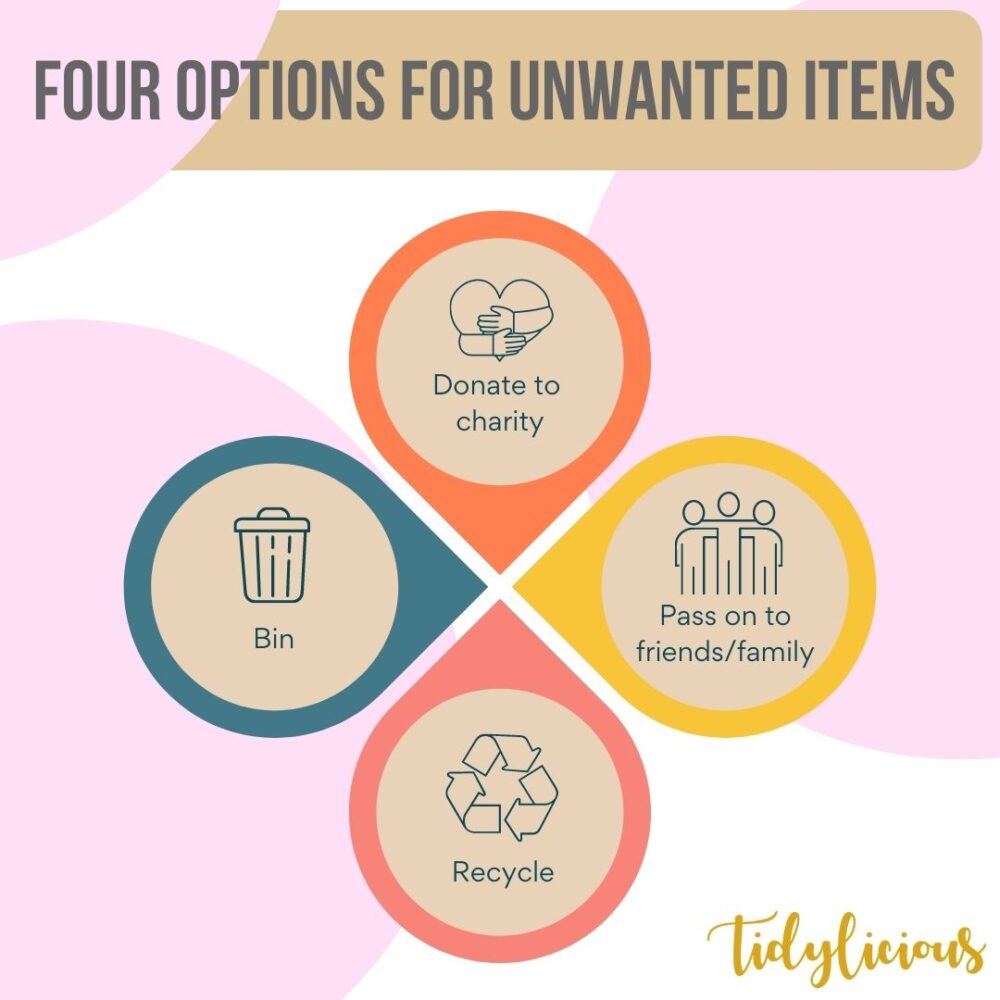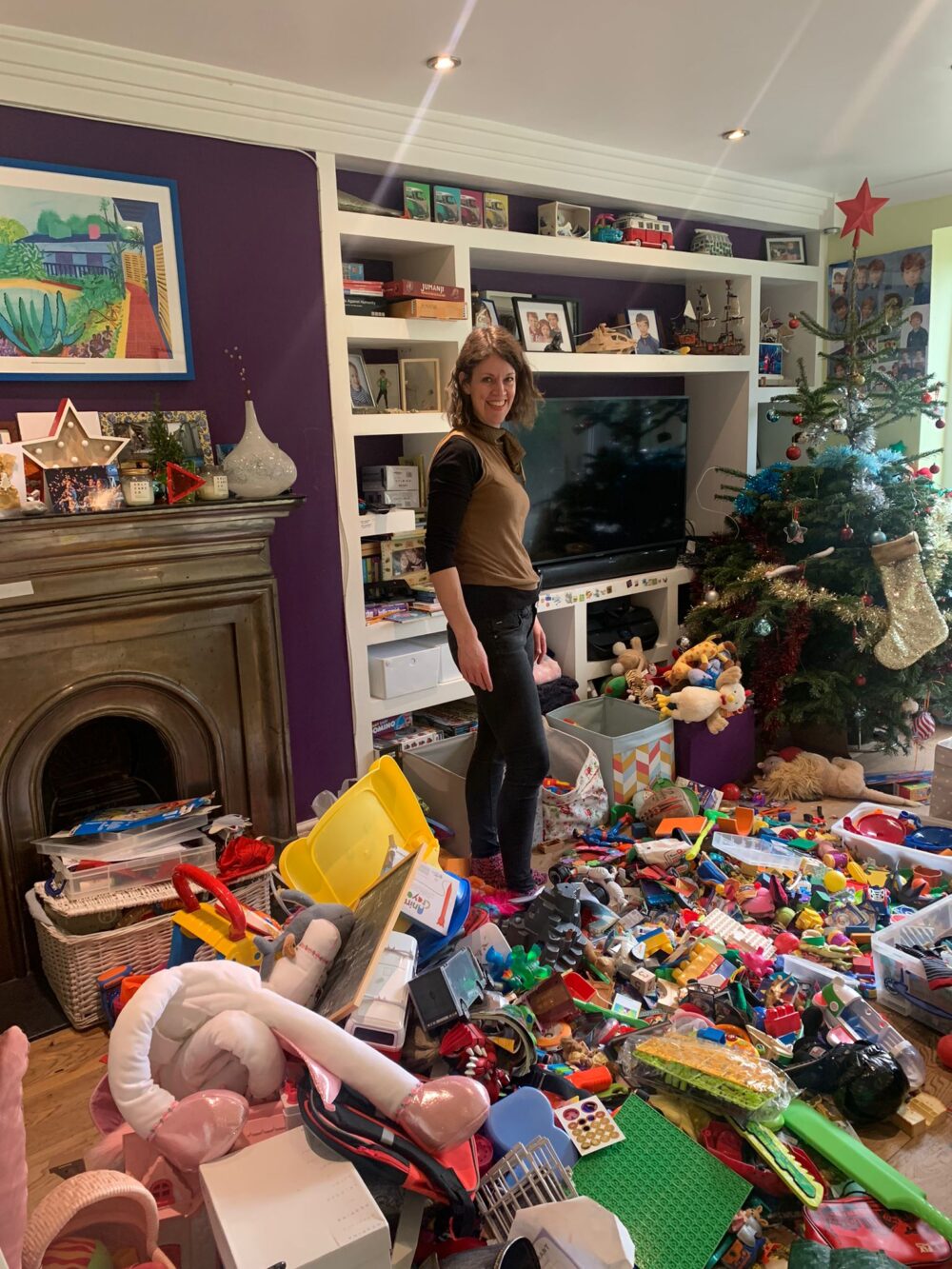Are your kids’ toys taking over your home? Do you feel that there are more toys than storage space, and are the toys always in sight even after you’ve tidied up? Despite the volume of toys, do your kids not even play that much with their toys, or at least not long enough for you to focus on something else? If you answered ‘yes’ to any of these questions, it might be time to declutter your children’s toys. In this blog post, I’ll explain how to declutter and organise your kids’ toys.
My story – Why did I declutter my kids’ toys?
Are your kids’ toys taking over your home? Do you feel that there are more toys than storage space, and are the toys always in sight even after you’ve tidied up? Despite the volume of toys, do your kids not even play that much with their toys, or at least not long enough for you to focus on something else? If you answered ‘yes’ to any of these questions, it might be time to declutter your children’s toys. In this blog post, I’ll explain how to declutter and organise your kids’ toys.
Toy storage
In her book Soulful Simplicity, Courtney Carver writes:
When you need to buy things for your things, it’s time for fewer things. When we start talking about organisational bins or extra storage options, we know it’s time get rid of stuff instead of accumulating more things to store it in.
This applies to your kids’ toys too. Obviously, you need something to store your children’s belongings in, but before considering buying another set of drawers or some pretty baskets, have a look at ALL the toys and games that you own as a family and decide whether you really need and want everything. Please read on to find out how to do this.
Tidy up by category
The first step to decluttering and organising your kids’ toys is to get all your children’s toys from everywhere in your house into one place. Then start putting everything into categories. Examples of categories could be: vehicles, lego, playmobil, board games, soft toys, playdoh, arts and crafts, transformers, dolls, etc. If a category is large, consider making subcategories. For example, my daughters have barbies, LOLs, clip-on and other dolls so we divided the dolls into several subcategories.
Involve your children when decluttering toys – No
Some parents prefer to declutter their children’s toys without the children being present. The main reason is usually because as parents we all know how excited our children can get when they see a toy which they had completely forgotten about. You know that they will only be interested in it for five minutes (if that!) but once they’ve seen it, it must stay. If you decide to do a toy cull without your children, you could ask them which toys they’d definitely like to keep before you start.
Involve your children when decluttering toys – Yes
If you decide to work on this project together with your children, they could already get involved in the first step which is getting all the toys into one place, and also with categorising the toys. In my experience, both at home and when working with clients, children like helping with this part of the process. However, they often don’t help from start to finish, and want to do something else for a while too. My advice is to let them decide how much or how little they’d like to help, because you don’t want to wear them out before the decision-making starts.
Talk with your children
Have a chat with your children about why you’d like to declutter your family’s belongings. Explain that you find that there are too many toys in the house, and how it’s physically not possible to keep everything. Also talk about the results:
- Once the decluttering and organising is done, they will only have things that they actually like and enjoy playing with, and they will know where their toys are. No more lost toys and no more time wasting searching for toys, which equals less frustration.
- It’s nice to create space, as it will be easier to see what you own and it will be easier to get it out from wherever you’ve stored it. Also, it might mean creating space for something new. Of course, you don’t want new things to enter your home at the same speed as things are leaving, but you do want to have toys/games which they are interested in right now, and which are age appropriate. A lot of parents like the mindfulness aspect – the focus on the here and now – of decluttering.
- It will be easier to tidy up. Admittedly, this one might not excite children that much. At first. However, if you get your children to help you do the daily tidying up, they will start to notice that this takes less time. I used to get quite grumpy with my children at tidy up time, but not anymore (or at least a lot less!!), because nowadays I know it’s an easy task to put everything where it belongs. Being a grumpy parent isn’t nice for the parent nor the child, so you could mention to your child that there will be less nagging and moaning. Less mess stress = more joy, calm, laughter and quality family time.
- If you’re donating unwanted toys to charity, or passing them on to friends/family or selling them, other children will get enjoyment out of the toys that your children don’t play with any more. In my experience, it makes children feel happy and quite grown up when they decide to pass on to another child a toy which is no longer right for them. You could also explain that if you’re donating to charity, it’s a win-win-win situation.

How to decide what to let go
If you’ve read any of my social media posts, or know anything about the KonMari Method®, you might know the phrase ‘Does this spark joy?’. I’d like you to consider this question for every item that you/your children own, and if the answer is ‘yes’ you keep it, otherwise you let it go. This positive focus, homing in on what you’d like to keep, makes decluttering easier than when the focus is on getting rid of things.
How to let your child decide
Explain to your children that they need to decide for every toy whether they still like it, and whether they’d still like to play with it. I usually sit down with a child, and hold up their toys one by one. I let them tell me if they’d like to keep the toy. You might be surprised at your children’s decision-making, and how good they are at it. There might be things they want to hold onto which you might not completely understand, for example a random rock or stick. There might also be toys which you think are great (sometimes despite your child hardly ever playing with it) or toys which have a special meaning for you, whilst your child doesn’t bat an eye lid when putting it on the discard pile.
Take a break
Making decisions about each and every toy can be quite exhausting. It might not be possible to declutter for 8 hours straight and get the job done in one day. My advise is to curb your expectations, build in breaks, have regular snacks and drinks, and divide the job over several shorter ‘sessions’. You could also give little rewards after each ‘session’: play a board game, watch a film, ice cream/chocolate/healthier snack, dessert after dinner, lunch in a café, extra screen/game time. Just to give a few ideas.
How to discard
Have four boxes or bags, or simply spaces, where you’re going to put the toys you’re not going to keep.

And you need a fifth box, bag or space to put the toys which you are going to keep, of course!
My view on selling items
Personally, I’m not a huge fan of selling items, unless I know that I’m getting a reasonable amount for it. Otherwise selling is often a lot of effort for only a little return on investment. If you’re selling online, you need to take one or more photos, write a description, put it online, reply to any questions, either pack and post it or arrange a date/time for collection (and deal with people not showing up or not wanting to pay the price you agreed on!). Just writing this down makes me feel tired! Instead, I prefer to donate to charity or pass on to friends or family. Only pass items on to other people when you know that they really want it. You don’t want your clutter to become their clutter! If items cannot be used any more, see if it can be recycled. Use the bin as a last resort. If you can avoid adding to landfill, that’s always good.
Toy storage and next steps
Now that you’ve got all your toys sorted by category, also store all toys by category. This will make it easier to find toys (no more searching for and frustration over lost toys). It is also THE way to avoid your home getting too cluttered again, because:
- Every one knows where everything belongs, so it’s easy to put things back rather than leaving it out creating clutter.
- You know what you’ve got, so you won’t buy duplicates.
- You can easily see when a category doesn’t fit in its designated storage space any more, which means it’s time to do a mini-declutter-session to stay on top of things.
- Children grow and develop quickly, so you will need to do mini-declutter sessions on a regular basis. You don’t need to make this into a big project; simply do this subcategory by subcategory. If you like, treat your children (and yourself!) to chocolate or ice cream every time you do a mini-declutter session. Any excuse for a little treat!
Help from Tidylicious
I hope these tips will help you to sort out your kids’ toys. If you feel a bit overwhelmed, stuck for time, you could use an extra pair of hands, need some accountability, have tried it before and feel that you’d like some extra support, I’m very happy to help you. On my Services page you can read more about the Single Tidying Sessions and Packages that I offer.



